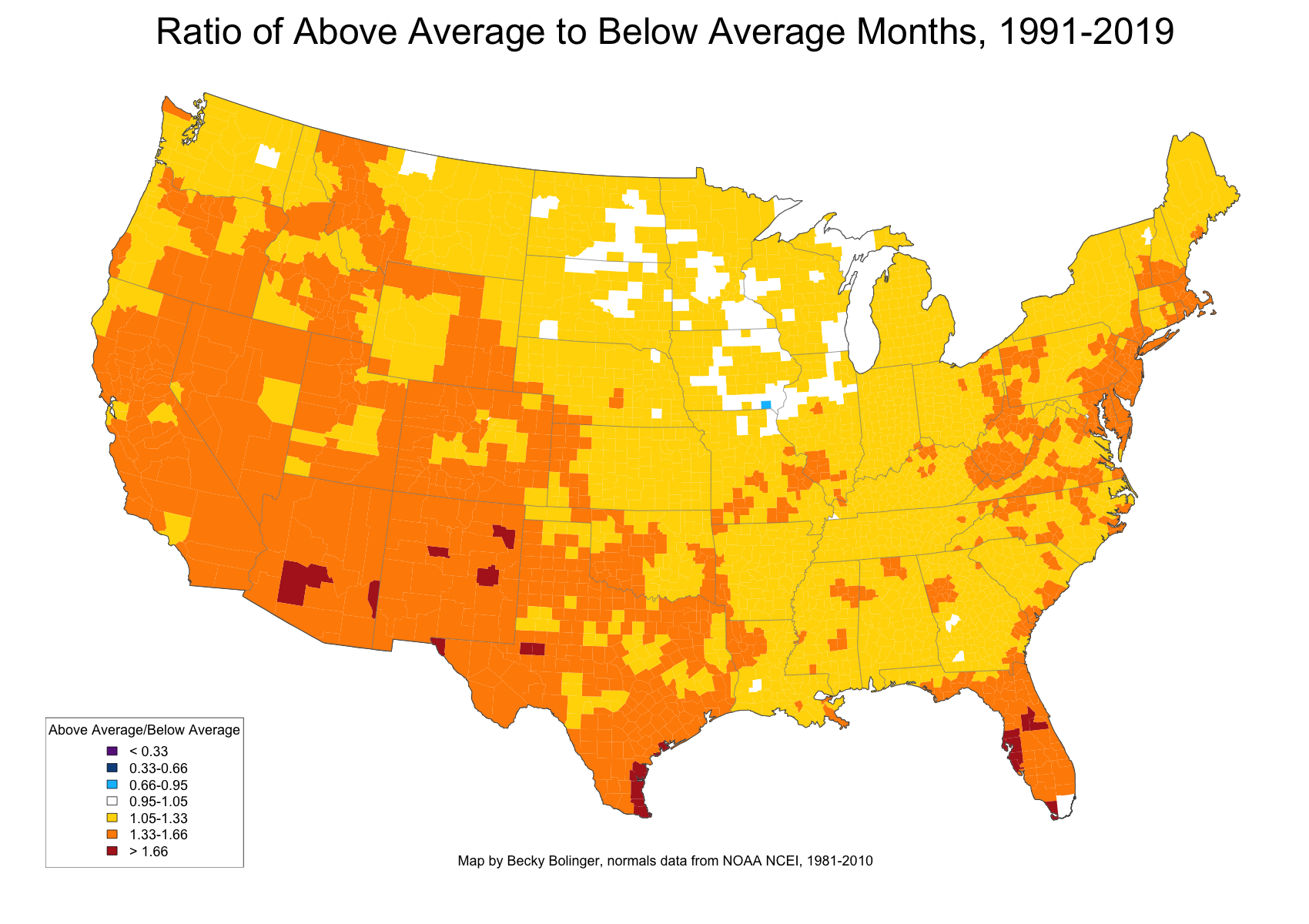
The 1991 to 2020 climate normals just released

The newest U.S. climate normals dataset released Tuesday May 4th, 2021 shows some interesting differences from the previous dataset from a decade ago.
Becky Bolinger posted a long while ago about how the new climate normals will compare to the 1981-2010 version.

For a refresher, the U.S. climate normals are computed every full decade, so we are now in the 1991 to 2020 period and the new dataset was just released today.
Let's run through some key times to see the changes between the datasets. All of this information is provided with greater detail here.
For the annual changes, we see that the Southwest and much of Colorado are drier in the newest dataset, meanwhile the Northern Plains are wetter than previously. Mean temperatures show a slight cooling for the Northern Plains also.

Let's inspect this at a closer level, first with precipitation changes.
For January:

For April:

For July:

For October:

Let's turn to the mean maximum temperature changes.
For January:

For April:

For July:

And, for October:

It is interesting to see the progression of colder conditions in the northern areas as well as the warmer conditions for the southwest which makes sense considering it is also trending drier in the new dataset.
For Colorado we see some seasonal shifts in both precipitation and temperature patterns, however, the new normals are, overall, drier and warmer for Colorado versus the 1981 to 2010 period.
When it comes down to station level data, you can access that data here but a word of caution, we have flagged some of the precipitation/snowfall normals for DIA which do not match the data for that site. I'm sure this rollout will bring lots of data questions for the NCEI to verify.
